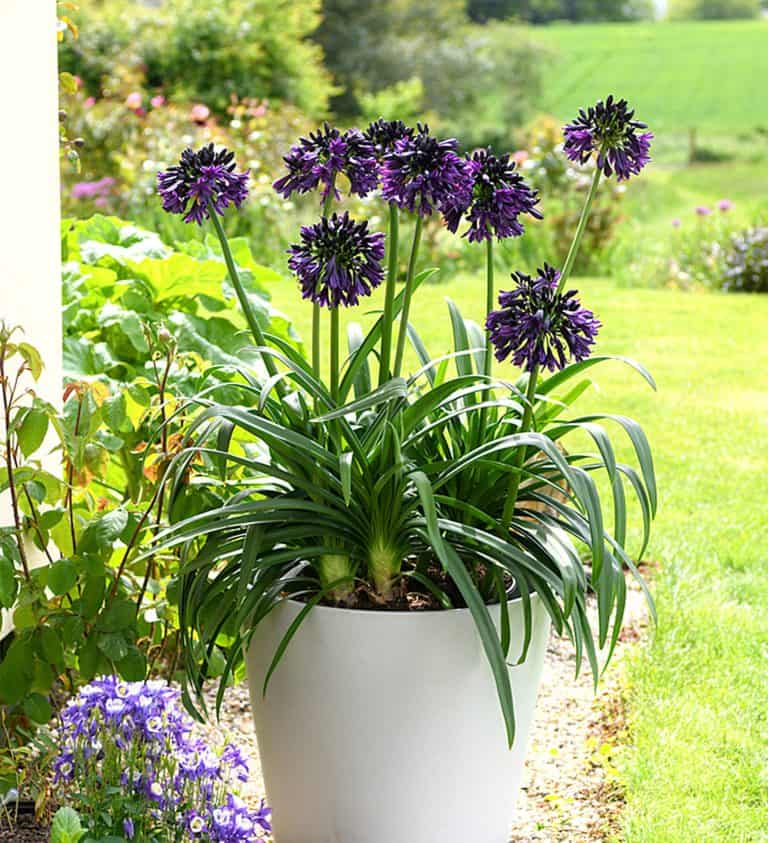Just how to Plant and Maintain Agapanthus in Your Yard
Just how to Plant and Maintain Agapanthus in Your Yard
Blog Article
Grasping the Art of Agapanthus Care: Crucial Steps for Healthy Growth and Vivid Blooms
In the realm of horticulture, the cultivation of agapanthus stands as a gratifying endeavor for those who seek to nurture these elegant blooming plants. From picking the right variety to understanding trimming techniques, the trip in the direction of cultivating thriving agapanthus plants is complex and holds the key to unlocking the full possibility of these botanical treasures.

Picking the Right Agapanthus Variety

When picking the ideal Agapanthus variety for your garden, take into consideration aspects such as environment suitability, blossom shade, and growth behavior. Additionally, think about the environment in your region to make certain the Agapanthus variety you select can grow in your particular problems. Recognizing the development habit of various Agapanthus varieties is vital for appropriate placement within your yard.
Ideal Planting Conditions
Taking into consideration the optimum environmental needs is crucial for effective Agapanthus cultivation. Agapanthus grows in well-draining soil with a somewhat acidic to neutral pH level. When growing, pick a place that gets full sunlight to partial color. In hotter climates, supplying some mid-day color can avoid scorching of the fallen leaves. Agapanthus plants are delicate to cold temperature levels and should be safeguarded from frost throughout wintertime months.
To make certain healthy growth and vivid blossoms, plant Agapanthus light bulbs at a depth of regarding 2-4 inches and room them 8-12 inches apart. Mulching around the base of the plants assists maintain moisture and reduces weed development.
Watering and Fertilizing Tips
Keeping appropriate dampness levels and providing crucial nutrients are essential elements in the treatment program for Agapanthus plants. When it comes to watering Agapanthus, it is essential to strike an equilibrium. These plants choose regularly wet soil however are at risk to root rot if overwatered.
Fertilizing Agapanthus is important for promoting healthy development and respected flowers. Use a balanced plant food, such as a 10-10-10 formula, in the very early springtime as brand-new development emerges. By complying with these watering and feeding tips, you can guarantee your Agapanthus plants flourish and generate lively, durable blooms.
Trimming Strategies for Agapanthus
Trimming Agapanthus plants at the proper times and with appropriate methods is crucial for look at this web-site maintaining their health and wellness and advertising ideal development and flowering. The excellent time to trim Agapanthus remains in late winter or very early springtime prior to new growth emerges. Begin by getting rid of any dead or yellowing fallen leaves near the base of the plant. Cut them as short as feasible without damaging the arising shoots.
For flowered stems, wait up until the blooms have withered and then cut them back to the base. This not just cleans the plant's appearance yet additionally encourages the development of new blossom Extra resources buds. Deadheading invested blossoms can also reroute the plant's energy right into generating even more blossoms as opposed to setting seeds. However, if you wish to gather seeds for propagation, leave some flowers to fully grown and dry on the plant.
Bear in mind to use clean, sharp devices to make exact cuts and decrease the threat of presenting conditions. Agapanthus. Normal trimming will certainly aid maintain your Agapanthus looking cool and healthy and balanced while ensuring a bountiful display screen of gorgeous blooms
Managing Common Bugs and Conditions
After making certain appropriate pruning techniques for Agapanthus, it is essential to deal with usual bugs and illness that can influence the helpful resources health and vigor of these plants. One usual insect that impacts Agapanthus is the Agapanthus gall midget.
Another typical problem is fungal fallen leave place, which provides as dark sores on the leaves. To stop fungal diseases, make certain good air flow around the plants, prevent overhead watering, and get rid of any type of contaminated leaves quickly. Additionally, Agapanthus plants can deal with origin rot if they are planted in inadequately draining soil. To stop this, plant Agapanthus in well-draining soil and avoid overwatering. By being alert and taking prompt activity against parasites and diseases, you can aid your Agapanthus plants grow and create vibrant blooms.

Verdict
Finally, grasping the art of agapanthus care involves choosing the ideal range, supplying optimal growing problems, appropriate watering and feeding, proper trimming strategies, and attending to typical parasites and conditions. By following these important steps, you can ensure healthy growth and vivid blossoms for your agapanthus plants. Bear in mind to routinely keep track of and maintain your plants to promote their overall wellness and durability.
To make sure healthy and balanced growth and lively blossoms, plant Agapanthus light bulbs at a deepness of about 2-4 inches and room them 8-12 inches apart. By following these watering and feeding tips, you can ensure your Agapanthus plants flourish and produce vivid, lasting flowers.
One typical insect that affects Agapanthus is the Agapanthus gall midget. Additionally, Agapanthus plants can suffer from root rot if they are grown in improperly draining soil. By complying with these vital steps, you can ensure healthy and balanced development and lively blossoms for your agapanthus plants.
Report this page